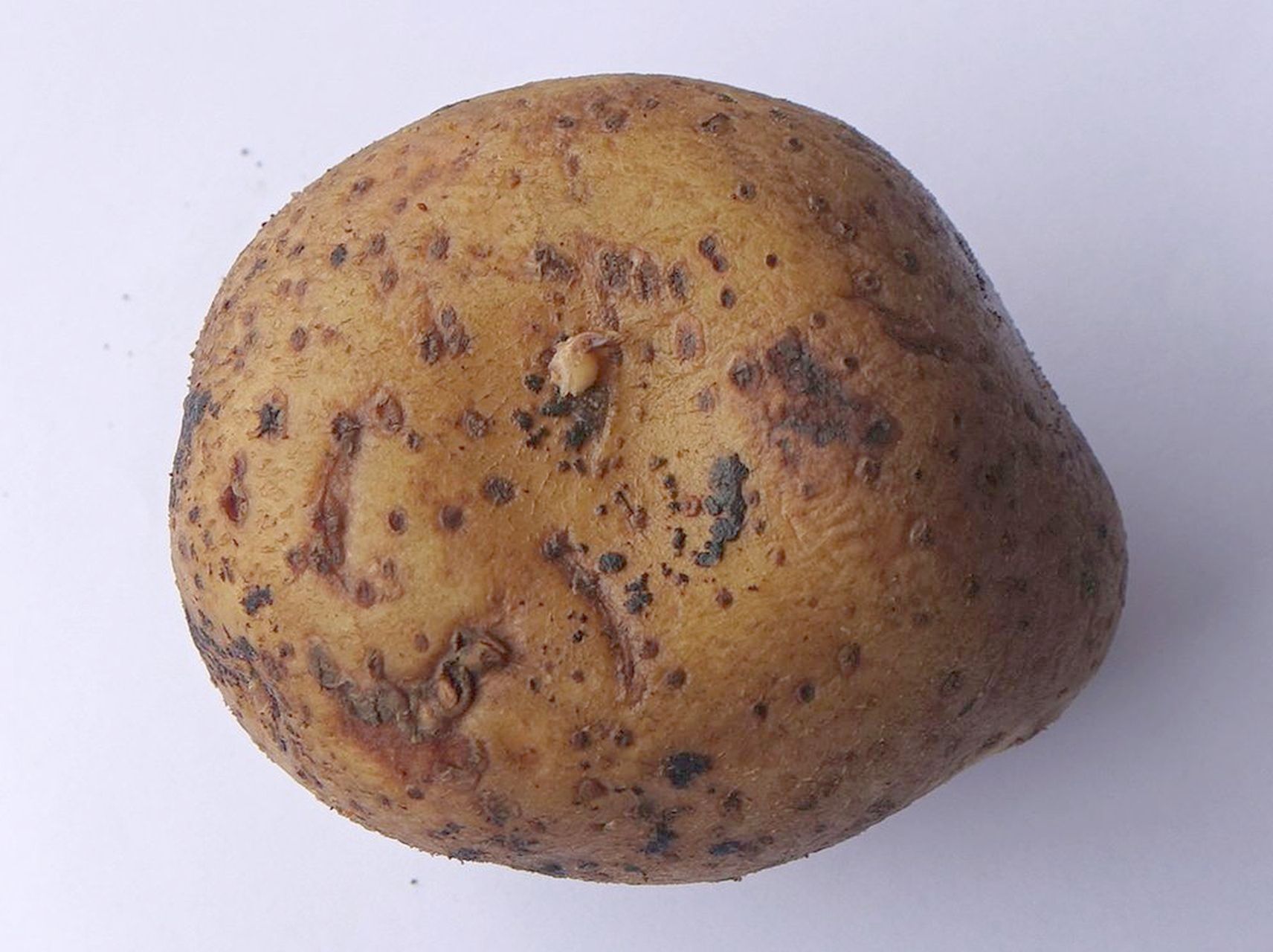
Powdery scab
Spongospora subterranea
What is Powdery scab (Spongospora subterranea)?
Powdery scab (Spongospora subterranea) is a globally widespread disease that affects potatoes and other plants belonging to the Solanaceae family. The disease manifests through the development of small purplish-brown pustules on tubers. These pustules gradually enlarge, taking on a wart-like appearance, and eventually rupture the tuber periderm. Powdery scab thrives in cool and wet environmental conditions.
How does Powdery scab (Spongospora subterranea) occur?
Powdery scab is caused by Spongospora subterranea, a soil-borne pathogen. It reproduces through a complex life cycle. The disease spreads when resting spores present in infected tubers or infested soil are released. Under favorable environmental conditions, the resting spores germinate and produce swimming zoospores. These zoospores infect the roots of host plants, leading to disease development. The pathogen can persist in the soil for several years, even without a host plant, ensuring its survival and potential for future infections.
Symptoms
1 - Plants Health
Powdery scab has a significant impact on plants, particularly potatoes. It decreases yield by damaging tubers, as scab lesions on tubers reduce marketability and quality. Severe infections can further result in stunted growth and weaken the affected plants.
2 - Impact on Soil and Environment
Spongospora subterranea survives in soil for years as a long-term disease reservoir, contributes to soilborne pathogen buildup, impacting soil health and productivity.
Solutions
1 - Prevention
• Planting certified, disease-free seeds reduces the risk of introducing the pathogen into the field. • Avoid planting in the same area for at least three or more years to break the disease cycle. • Do not plant in fields with a history of powdery scab to minimize disease pressure. • Practice good field hygiene by removing and destroying infected plant debris to reduce inoculum levels.
2 - Cultural Practices
• Plant in well-drained soils to reduce moisture and create an unfavorable environment for the pathogen. • Excess moisture can promote disease development, so proper irrigation management is essential. • Adding zinc sulfate (ZnSO4) to the soil may help reduce the incidence of powdery scab.
3 - Fumigation
• In fields with a history of powdery scab, pre-plant fumigation with fumigants like Metam sodium or Metam potassium can reduce disease incidence. • However, it is important to note that specific brand names or trade names of these products may vary depending on the region and country. Follow manufacturer recommendations and local regulations when using these products.
4 - Application of Fungicides
• Several fungicides, including Metalaxyl-M (Ridomil Gold), Flutolanil (Moncut), and Propamocarb (Previcur), have shown efficacy against powdery scab. • However, their availability and registration may vary by region, so it is important to consult with local agricultural authorities for approved fungicides and proper application guidelines.
